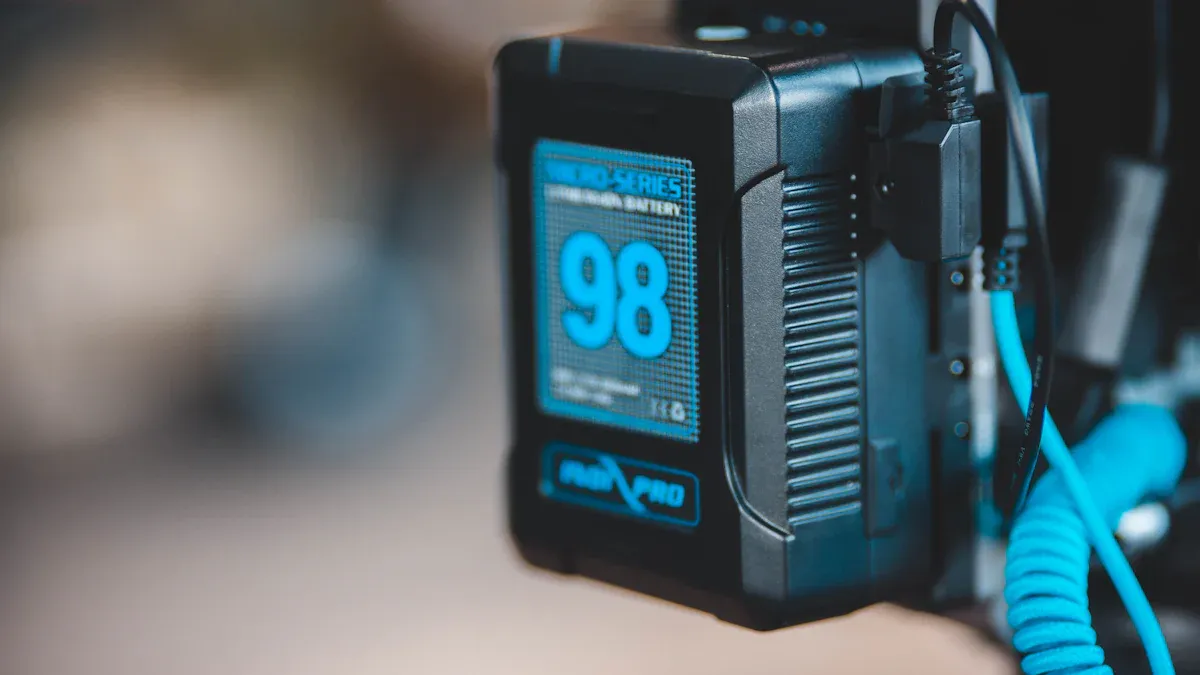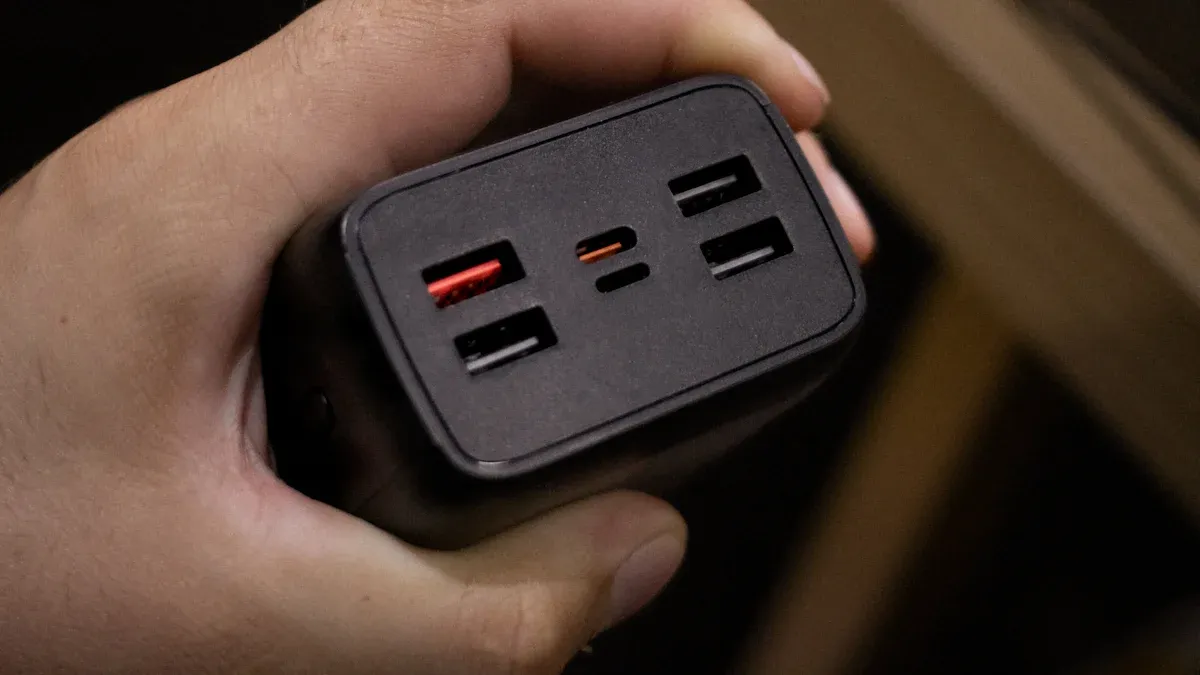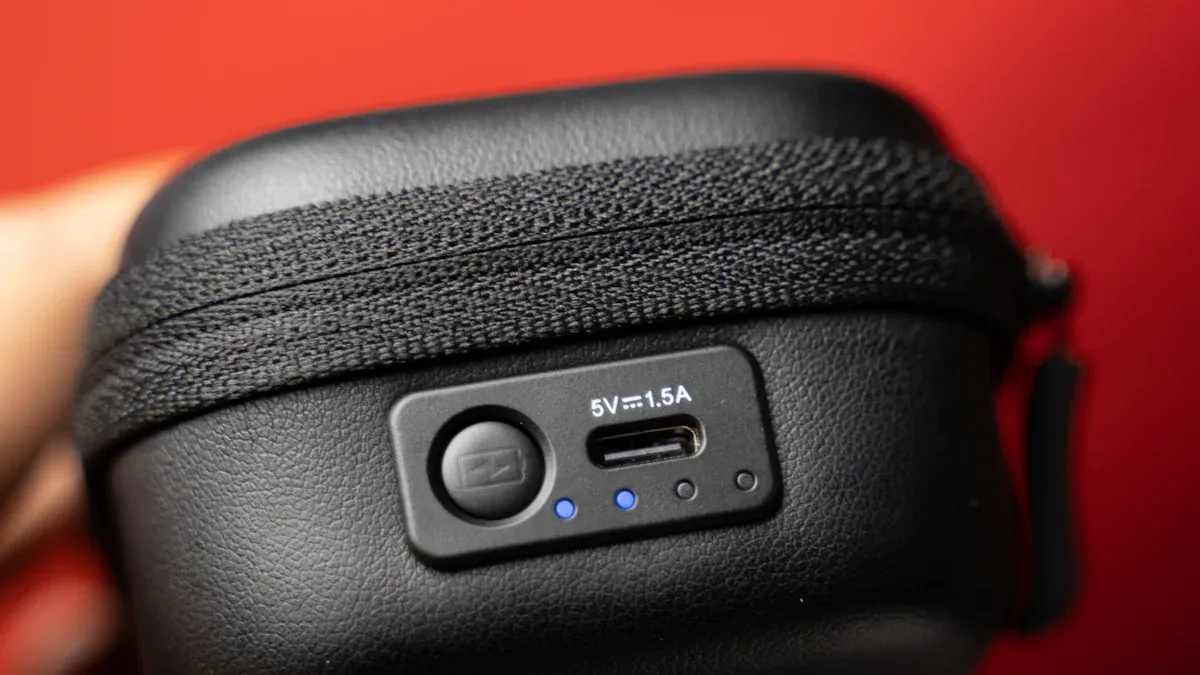How to Keep Your Flashlight Batteries Safe from Overcharging

Overcharging rechargeable batteries can cause serious issues. It generates excessive heat, damages battery cells, and reduces lifespan. In extreme cases, it leads to leakage or rupture. Proper battery care ensures safety and performance. For flashlight using, reliable batteries prevent failure during emergencies, making them essential for both daily use and critical situations.
Key Takeaways
Charging batteries too long can make them hot or swell. It might even cause explosions. Use chargers with overcharge protection to stay safe.
Watch charging times and follow the maker's instructions. Use timers or chargers that stop charging when batteries are full.
Keep batteries in a cool, dry spot and check them often for damage. Good storage and care help batteries last longer and keep your flashlight ready.
Why Overcharging is Harmful

Risks of Overcharging Rechargeable Batteries
Overcharging rechargeable batteries can lead to several harmful effects. When excess current flows into the battery, it generates heat, which can damage the internal components. This overheating may cause the battery to swell or leak, compromising its structure. In severe cases, the battery might even explode, especially if it is a lithium-ion type. Overcharging also shortens the lifespan of the battery, making it less reliable over time. To avoid overcharging, you should always use chargers with built-in protection features.
Impact on Flashlight Using and Performance
Overcharged batteries can negatively affect your flashlight's performance. You might notice flickering lights or unexpected dimming during use. Sometimes, the flashlight may fail to turn on altogether. These issues occur because overcharging degrades the battery's voltage output, leading to inconsistent power delivery. Over time, this degradation results in weak battery performance, reducing the reliability of your rechargeable flashlight. Proper charging habits can help maintain steady battery performance and ensure your flashlight works when you need it most.
Safety Hazards of Overcharging
Overcharging poses significant safety risks. Excessive heat can lead to fires, while swelling or leakage can damage nearby objects. In rare cases, an overheated battery might explode, causing serious harm. Regular overcharging also contributes to decreased battery life, making replacements necessary more frequently. To ensure safety, always monitor charging times and follow the manufacturer's guidelines for rechargeable batteries. These precautions help you avoid overcharging and reduce the risk of accidents.
How to Prevent Overcharging
Use Chargers with Overcharge Protection
Using chargers with overcharge protection is one of the best ways to avoid overcharging. These chargers automatically stop charging the battery once it reaches its maximum capacity. This feature prevents overheating and prolongs the lifespan of your rechargeable batteries. Many modern chargers also include voltage regulators that monitor the battery's voltage. If the voltage exceeds safe limits, the charger cuts off the power supply immediately. This ensures your rechargeable flashlight batteries remain in optimal condition. Always choose a charger that matches the correct voltage for your batteries to maintain safety and performance.
Protected flashlight batteries often come with an overcharge protection circuit. This circuit disconnects the battery from the power source once fully charged, ensuring no further current flows into the battery.
Monitor Charging Times and Avoid Overcharging
Keeping an eye on charging times is crucial to prevent overcharging. Overcharging can lead to decreased battery life and reduced battery performance. Set a timer or use a charger with an automatic shut-off feature to avoid leaving your batteries plugged in for too long. Rechargeable batteries typically take a few hours to charge fully. Check the manufacturer's instructions for the recommended charging duration. By monitoring charging times, you can protect your batteries and ensure they last longer.
Follow Manufacturer Guidelines for Rechargeable Flashlight Batteries
Manufacturers provide specific guidelines to help you maintain rechargeable batteries. Always use the type of batteries recommended for your flashlight. Handle your flashlight carefully to avoid dropping or shaking it, as this can damage the batteries. Recharge your batteries properly by following the instructions provided. For example, avoid overcharging by using chargers with built-in protection. Additionally, store your batteries in a cool, dry place and remove them from the flashlight if you won’t use it for an extended period. These practices help you maintain battery performance and ensure safety.
Apply the 40-80 Rule for Battery Longevity
The 40-80 rule is a simple yet effective way to extend the longevity of your rechargeable batteries. This rule suggests keeping the battery charge between 40% and 80%. Avoid letting the battery drain completely or charging it to 100% frequently. Batteries experience the most strain when fully charged or completely discharged. By maintaining a mid-range charge, you reduce wear and tear on the battery cells. This practice not only improves battery performance but also helps you avoid overcharging.
Constant charging and discharging can wear down batteries over time. Following the 40-80 rule minimizes strain and ensures your batteries last longer.
Choosing the Right Charger

Features to Look for in a Charger for Rechargeable Flashlights
Selecting the right battery charger ensures your rechargeable flashlight performs reliably. Look for chargers with essential features to protect your batteries and enhance usability. Safety features like overcharge protection and short circuit prevention are critical. These features prevent overheating and extend battery life. Chargers with LED screens or displays are also helpful. They show battery percentage and voltage, allowing you to monitor the charging process. Additionally, avoid chargers with proprietary or magnetic ports, as losing the original charger can limit your options. Instead, choose a charger with universal compatibility for convenience.
Other factors to consider include portability and warranty. A portable charger is ideal if you frequently use your flashlight outdoors or away from home. Checking warranty information provides peace of mind in case of defects. Reading customer reviews can also help you find a reliable charger that meets your needs.
Importance of Overcharge Protection in Chargers
Overcharge protection is a must-have feature in any battery charger. This function stops charging automatically when the battery reaches full capacity. It prevents overheating, which can damage the battery or cause safety hazards. Overcharge protection also ensures your rechargeable batteries maintain their performance over time. Without this feature, batteries may swell, leak, or lose their ability to hold a charge. Always prioritize chargers with this safety feature to protect both your batteries and your flashlight.
Recommended Charger Types for Flashlight Using
For rechargeable flashlights, smart chargers are highly recommended. These chargers automatically adjust the charging current and stop when the battery is full. They also detect the correct voltage for your battery type, ensuring safe and efficient charging. USB chargers are another great option for their portability and ease of use. If you need faster charging, consider a high-power charger that matches your battery's specifications. Always choose a charger designed for rechargeable batteries to avoid compatibility issues and ensure optimal performance.
Best Practices to Maintain Rechargeable Batteries
Proper Storage of Rechargeable Batteries
Storing your batteries correctly is essential to maintain rechargeable batteries and ensure safety. Follow these best practices to keep them in good condition:
Best Practice | Description |
|---|---|
Keep cool and dry | Store batteries in a cool, dry place to prevent moisture damage and temperature-related degradation. |
Partial charge for long-term storage | If storing batteries for an extended period, keep them at around 50% charge to maintain health. |
Avoid extreme temperatures | Store batteries in environments with stable, moderate temperatures to prevent thermal stress. |
Control humidity | Excess moisture can lead to corrosion and other damage, so store batteries in low-humidity environments. |
Prevent short-circuits | Store batteries in non-conductive containers to avoid accidental short-circuiting, which can cause fires or explosions. |
Allow for airflow | Store batteries in well-ventilated areas to dissipate any heat generated during storage. |
Regular checks | Periodically check stored batteries and recharge if their charge falls below recommended levels. |
Avoid inactivity | Even when not in use, occasional charging cycles can help maintain battery health. |
By following these steps, you can store your battery safely and extend its lifespan.
Periodic Maintenance and Inspection
Regular maintenance is key to keeping your rechargeable flashlight batteries in top condition. Inspect your batteries for signs of wear, such as swelling, leakage, or corrosion. Clean the terminals with a dry cloth to ensure proper electrical contact. Recharge your batteries every 3-6 months, even if they are not in use, to prevent self-discharge. These simple steps help maintain rechargeable batteries and ensure they perform reliably.
Avoiding Extreme Temperatures During Flashlight Using
Extreme temperatures can harm your rechargeable flashlight batteries. Cold weather reduces performance, especially for lithium-ion batteries, which may fail below -40°F. Metal flashlights can also become too cold to handle, and moisture may freeze inside, causing short circuits. In hot conditions, batteries may overheat, leading to swelling or leakage. To protect your flashlight and batteries, avoid using them in extreme environments. If you must use them in cold weather, consider switching to LED bulbs, which are more durable in low temperatures.
Replacing Batteries When Performance Declines
Rechargeable batteries lose capacity over time. Replace them when you notice reduced runtime or inconsistent performance in your flashlight or headlamps. Avoid leaving batteries in a fully discharged state for long periods, as this can cause permanent damage. Always use batteries with the correct voltage for your device to ensure safety and optimal performance. Replacing old batteries promptly helps maintain rechargeable batteries and keeps your flashlight reliable.
Overcharging rechargeable batteries poses serious risks.
Excessive heat can damage battery cells and increase internal pressure, leading to swelling or leakage.
Chronic overcharging may cause explosions, especially in lithium-ion batteries, and significantly shorten battery lifespan.
Using chargers with overcharge protection and following proper care habits ensures safety and extends battery life.
Store batteries separately when not in use, inspect them regularly, and avoid extreme temperatures. These practices keep your flashlight reliable and ready for use.
FAQ
How can you tell if your flashlight battery is overcharged?
Overcharged batteries often feel hot or show signs of swelling. You may also notice reduced performance during flashlight using, such as dimming or flickering lights.
Can you leave rechargeable batteries in the charger overnight?
Avoid leaving batteries in the charger overnight. Overcharging risks overheating and reduces battery lifespan. Use chargers with automatic shut-off to prevent this issue.
What should you do if a battery leaks inside your flashlight?
Remove the battery immediately. Clean the flashlight with a dry cloth. Avoid using water or chemicals. Replace the battery with a new one to ensure safety.
See Also
Key Strategies for Keeping Your Flashlight in Top Shape
Maximize Your Flashlight's Battery Life with These Simple Tips
Comprehending How Rechargeable Flashlights Lose Their Charge
Complete Handbook on Flashlight Batteries: Key Insights and Tips
Prolong Your Flashlight's Lifespan for Extended Functionality
